Cattolica, what to see: not only sea, 8-step itinerary
Cattolica is known everywhere as a land of vacations, endless beaches and nightlife, but it is also a land of art and culture. Still Romagna, but with Le Marche just around the corner, Cattolica over the years has become a point of reference for those looking for a relaxing and fun-filled vacation and that is why Cattolica is frequented every year by so many Italian and foreign tourists. It is no coincidence, however, that Cattolica is also called the Queen of the Adriatic since here the beauty of the landscape, crystal-clear waters and magnificent beaches are combined with an ancient history. The city proudly boasts its seafaring origins and an ancient tradition of hospitality dating back to when it was a place of transit and rest for wayfarers traveling along the Via Flaminia more than two thousand years ago. In Cattolica even today everything is on the scale of the traveler who, when he arrives, finds an elegant and stately city marked by large tree-lined avenues overlooked by stores and places to enjoy an aperitif or eat an ice cream. There is also no shortage of places to watch concerts and live shows with in Piazza della Repubblica, which in the summertime is transformed into the Arena della Regina, which houses the Centro Culturale Polivalente, a futuristic structure designed by architect Pier Luigi Cervellati. Also very interesting is the Regina Museum, which tells the story of Cattolica from the Roman period to the present day, but visits to theCattolica Aquarium and the historic port are also a must. Here are the must-see stops on your trip to Cattolica.
1. The Oratory of Santa Croce
One of Cattolica’s cultural centers is definitely the old Oratory of Santa Croce. It is a 16th-century structure that now houses the Santa Croce Municipal Gallery. The old oratory was originally attached to a small hospice complex that arose in 1583, which today has been transformed into the home of the Queen’s Museum. For centuries the church was an important place of worship and reference point for the entire community of Cattolica until, during the 19th century, it was deconsecrated and major transformations began to adapt it to new uses. The conservative restoration to which it was subjected in 1980 restored its original forms, particularly the portal that had been demolished in the early 20th century. What is striking today is first and foremost a fine facade with forms derived from a Mannerist setting. Above all, however, it is its interior that attracts visitors. Since the oratory of Santa Croce, became part of the heritage of the Municipality of Cattolica, it has been reused for cultural purposes. Thus, it is here that temporary exhibitions with a particular focus on contemporary art have been hosted since the 1980s.
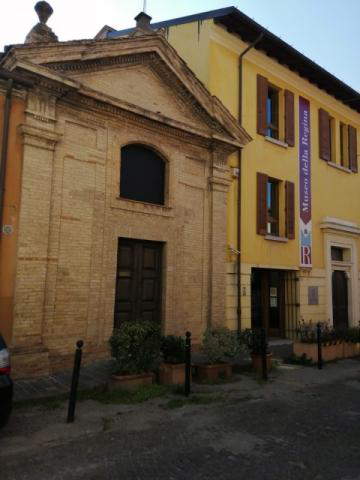
2. The Regina Museum
The Queen’s Museum is the best place to start your visit to discover the history of Cattolica. Also known in the past as the Antiquarium, the Regina Museum is located in the former Pilgrim Hospice. The Regina Museum has two sections: an archaeological section and an ethno-anthropological section dedicated to traditional seafaring. Very interesting is the first section where are kept the artifacts that emerged during the excavations carried out in Cattolica since the 1960s and that brought to light material evidence related to the Roman age and that in 2007 also revealed the presence, of a Bronze Age village dating between 1800 and 1500 BC. The section devoted to “Sea People” also has a special charm. Here one can follow an exhibition itinerary that, starting from the events related to the birth of the port in the modern age, documents the developments in shipbuilding, navigation and fishing techniques, the daily, religious and social life of maritime communities up to the transformations related to the advent of the motor from the 1920s onward.
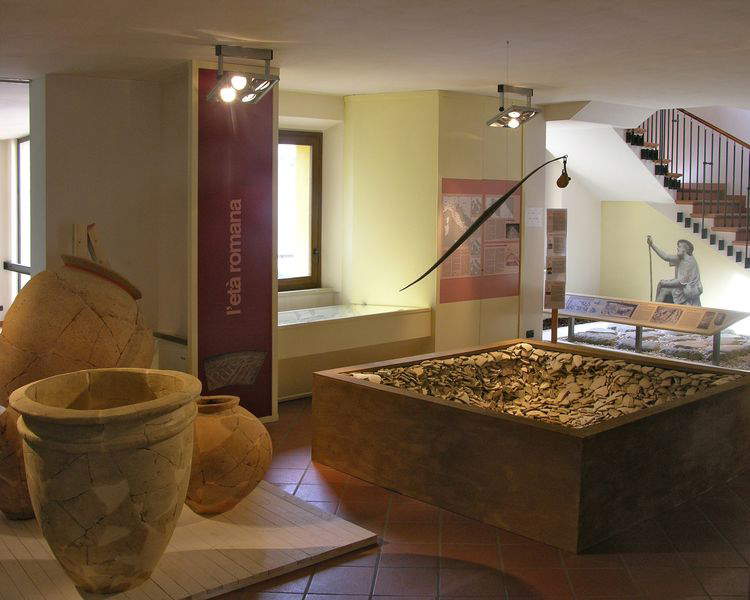
3. The Malatesta Tower
In the heart of Cattolica lies one of the most important symbols of its history: the Malatesta Tower. Cattolica, after all, has been a borderland for centuries with the clashes between the rival Montefeltro and Malatesta families going on long and often fiercely. Thus from exquisitely warlike needs arose the need to build a structure such as the Malatesta Tower whose origins are traced back to 1490 with the main purpose of controlling the coastal stretch between the Via Flaminia and the Via Emilia. In 1795, it was elevated with the creation of a high ground that allowed it to maintain visual control over the coast. Instead, in the 19th century it was acquired by Count Saladino Saladini Pilastri of Cesena, who heavily modified it to adapt it as a holiday villa. Today it is located right in the center of Cattolica, a stone’s throw from the sea and surrounded by lots of greenery, making it a favorite landmark for tourists and travelers alike.
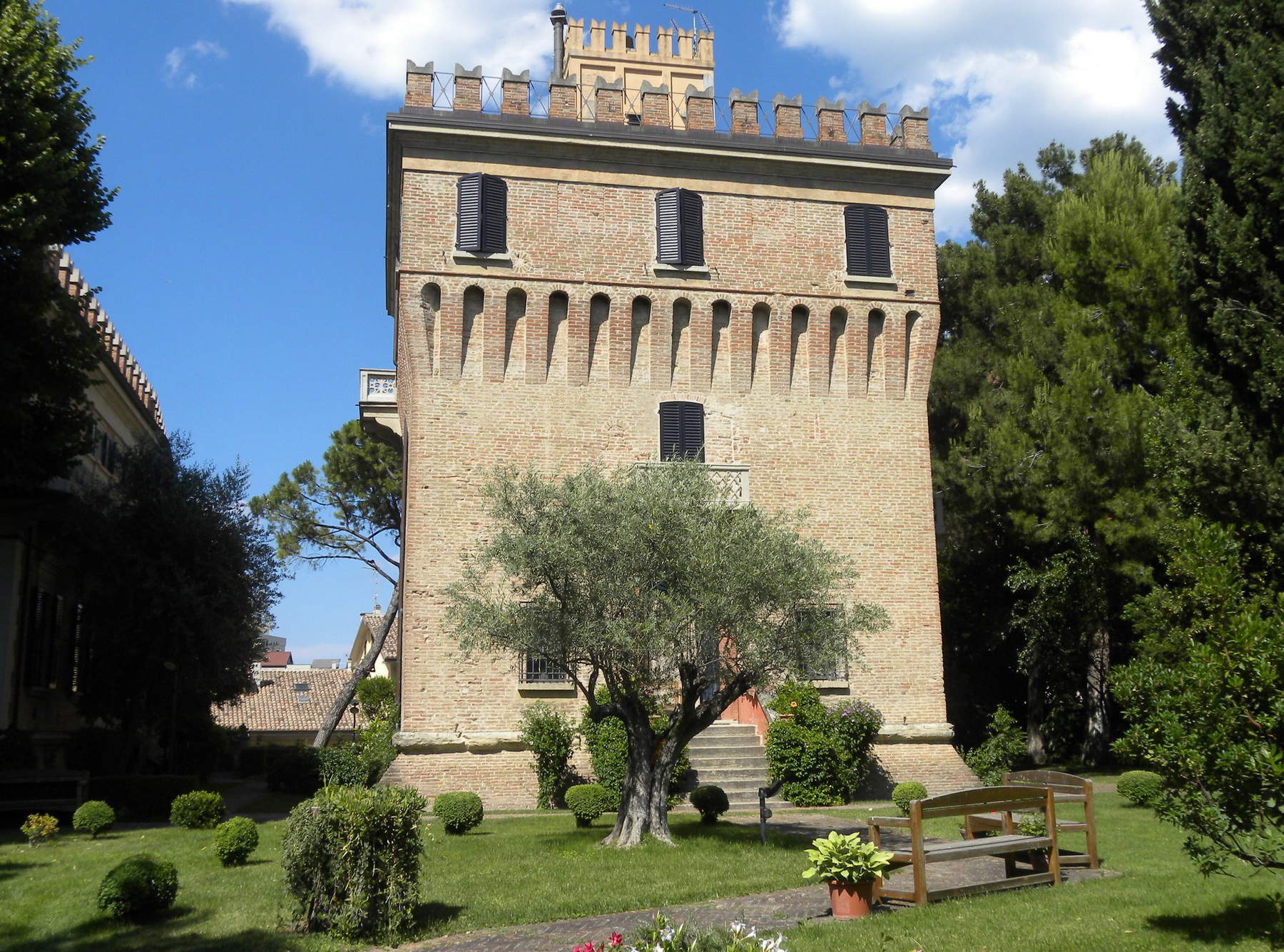
4. The Church of St. Pius V
One of the most important places of worship in Cattolica is undoubtedly the beautiful church dedicated to St. Pius V. It is a building dating back to the second half of the 19th century, entirely financed by Pope Pius IX, who is said to have been impressed by the deep religiosity of the inhabitants of Cattolica. The church of St. Pius V was completed in 1870 with the creation of a large image of the city’s patron saint, Pius V to be exact, which was placed above the high altar. It is still one of the main works of art preserved in the church even though it occupies one wall of the left aisle. Over the decades the church of St. Pius V has been restored several times, and in 1951 the bell tower was built with the offerings of the faithful, while it was at the beginning of the 21st century that major restoration work began on the facade and the numerous frescoes inside, such as the large painting depicting the pontiff at prayer, painted between 1850-60 and exalting in its symbolism the seafaring and Christian tradition of the people of Cattolica. Also very interesting are the underground passageways under the building, which were used as a shelter during World War II.
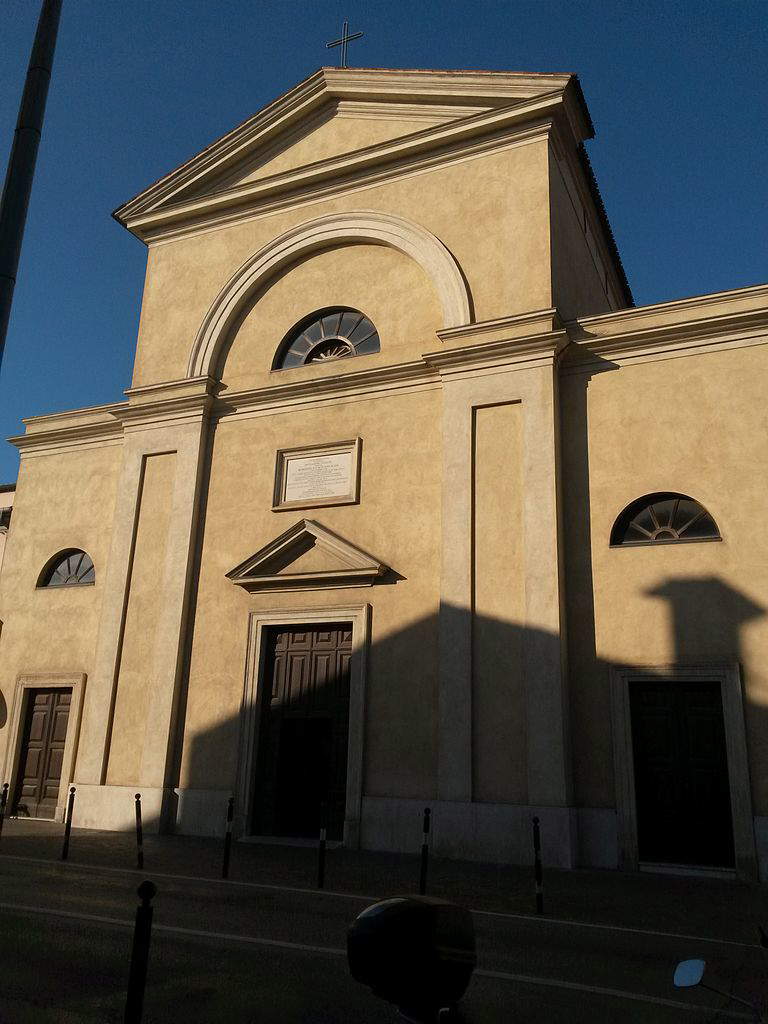
5. Siren Square
The fulcrum of Cattolica life, Sirens Square is probably the place where one can best appreciate the charms of the Queen of the Adriatic. Also known as Piazza Primo Maggio, Piazza delle Sirene faces directly onto the sea and owes its name to the iconic fountain that depicts three procubescent mermaids swathed in voluptuous drapery and was created in 1928 by Forlì sculptor Giuseppe Casalini, who used his 19-year-old daughter Francesca for the casts of the mermaids.The square has always marked the junction point between the beach with its sea and bathing establishments with the city, its clubs and stores. Today the Fountain of the Sirens is always one of the most recognized symbols of Cattolica, but it is also the protagonist of a truly unique spectacle since on summer evenings it literally comes to life. At set times in the Sirens’ Square the show of dancing fountains is staged. The water jets of the Sirens’ fountain rise and fall following the rhythm of music, with spectacularly colored lights that act as a background to the water games, creating a truly enthralling setting.
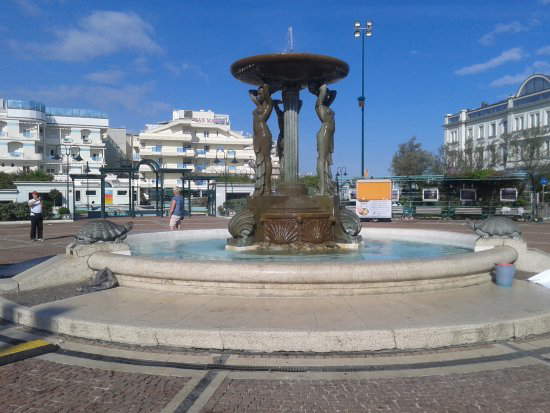
6. Cattolica Aquarium
Cattolica’s “Le Navi” Aquarium is the second largest in Italy, and the largest on the Adriatic coast. It was inaugurated in 2000 and occupies the spaces of the “Le Navi” complex, a former colony designed in 1931 by architect Clemente Busiri Vici and opened in 1934 as Colonia Marina XXVIII Ottobre. It is one of the main Italian architectural complexes following the Futurist style. Abandoned after the war, it was restored and redeveloped and since 2000 has been home to a marine park that occupies an area of no less than 110 thousand square meters: more than 100 tanks housing 10 thousand marine animals reproducing the most diverse ecosystems, from Mediterranean to tropical habitats, from coral reefs to rivers. Sharks, penguins, jellyfish, as well as otters and caimans, reptiles and an exhibition telling the mysterious world of fish from the deep.
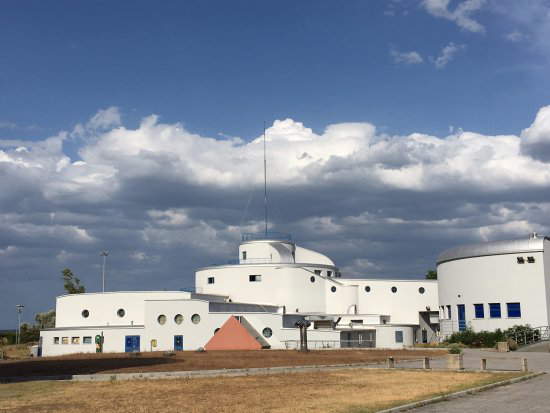
7. The Covered Market.
This is an impressive architectural project built in the 1920s, under the Fascist regime: it was inaugurated in 1926 and intended to house the market vendors’ stalls, as well as several warehouses (the initial plan also included the construction of a hall for parties and shows, but the exhaustion of resources made it impossible). Cattolica’s Mercato Coperto presents itself on the outside with a severe façade on which large windows open to give light to the interior: redeveloped in recent years, today the Mercato Coperto continues its commercial vocation since it houses stores and stores, especially in the food sector, and is a usual meeting place for the inhabitants of the Romagna town.
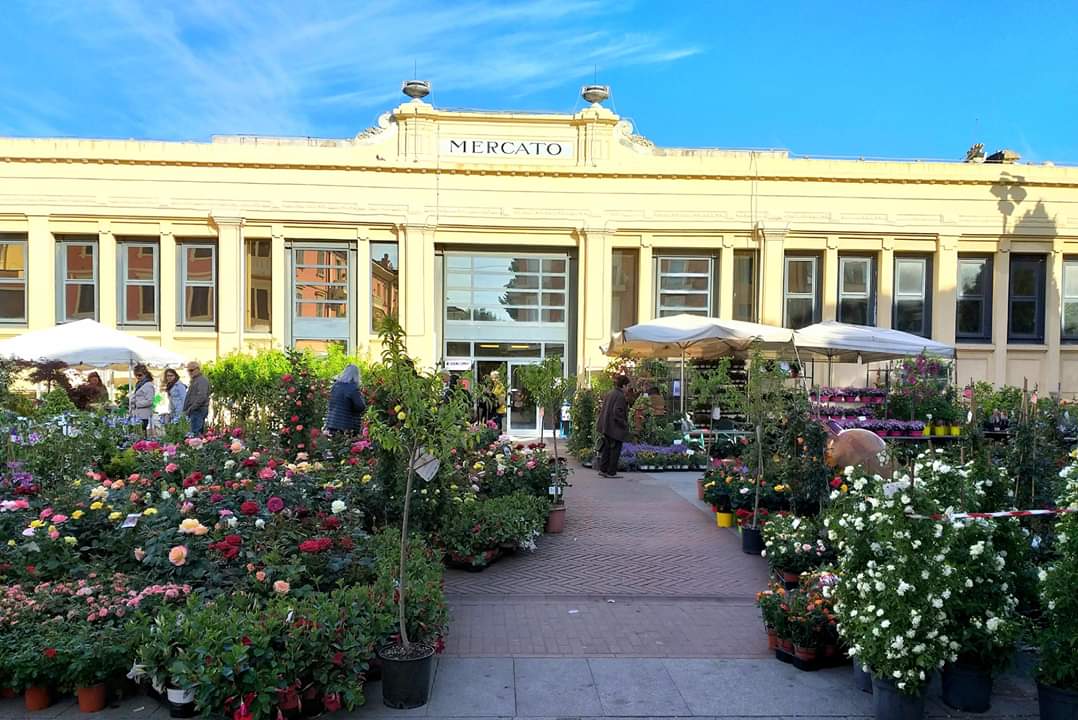
8. The Multipurpose Cultural Center.
It stands on Piazza della Repubblica and is a complex of buildings designed by one of Italy’s leading architects, Pier Luigi Cervellati, in the 1980s (the opening of the center was in 1983, and at the time it was going to enhance what was at that time a non-central and little-used area of Cattolica). Inside are the Municipal Library, the Mediatheque, the Teatro della Regina (designed in 1984 and inaugurated in 1996 with a concert by soprano Katia Ricciarelli: it has the distinction of being one of the main Italian-style theaters built from scratch after the war), and an outdoor stage that is used in the summer for concerts and events.
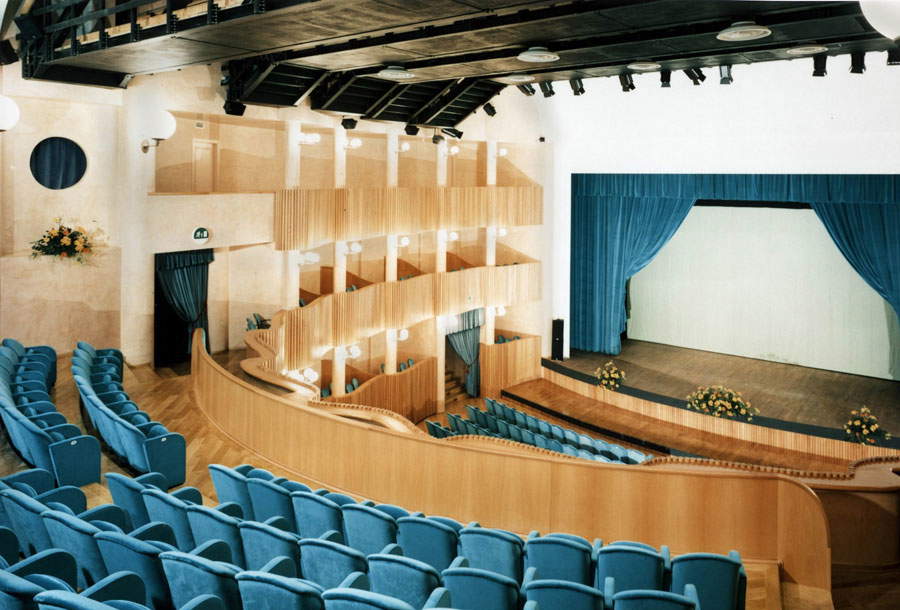
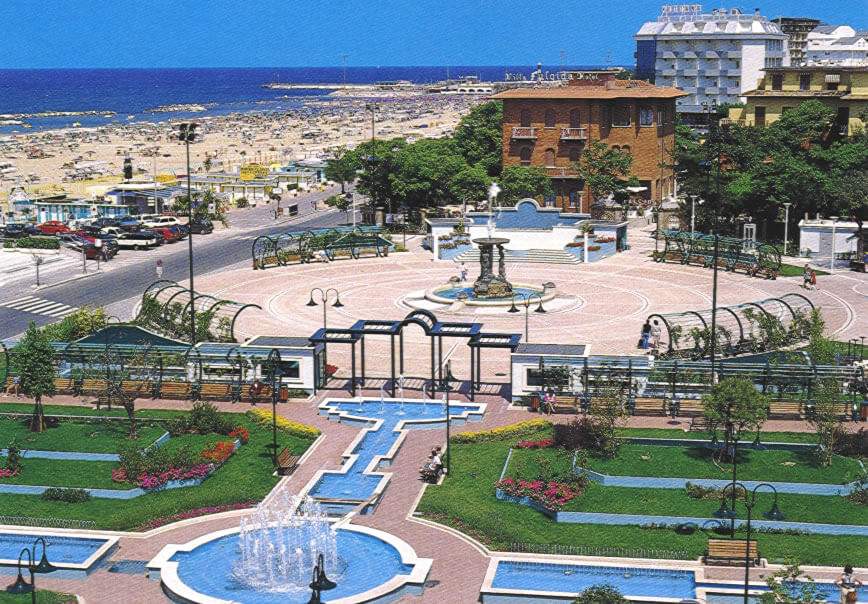 |
| Cattolica, what to see: not only sea, 8-step itinerary |
Warning: the translation into English of the original Italian article was created using automatic tools. We undertake to review all articles, but we do not guarantee the total absence of inaccuracies in the translation due to the program. You can find the original by clicking on the ITA button. If you find any mistake,please contact us.



























